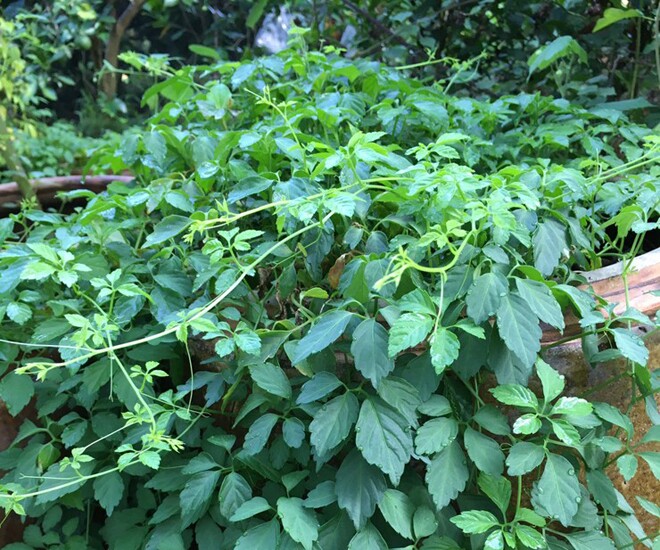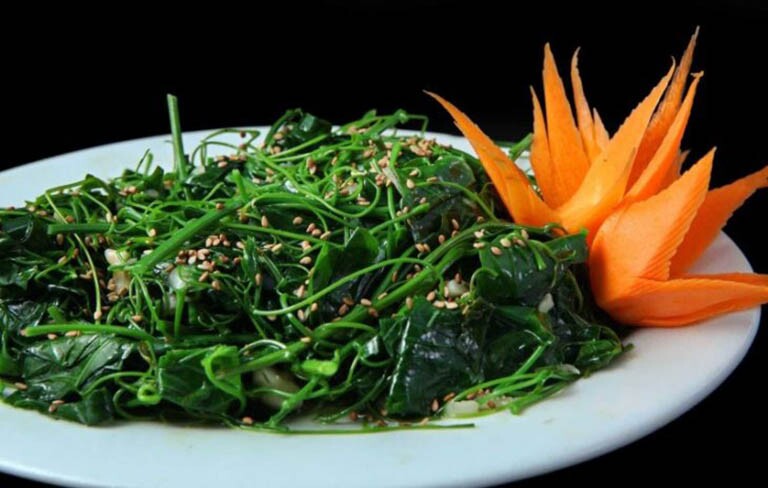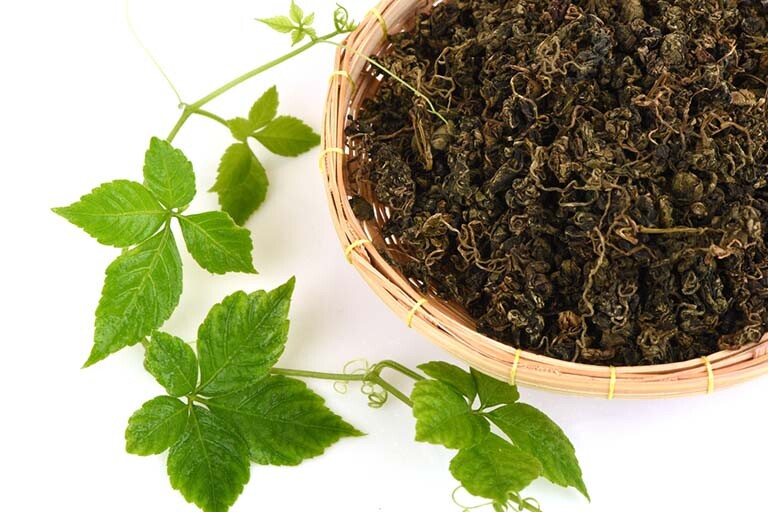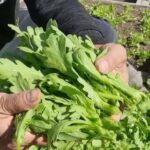
Giảo cổ lam, a wild vine native to the mountainous regions of Vietnam, has become an intriguing culinary delight for locals and tourists alike. Once a humble forest plant, it now graces the menus of restaurants and homes across the country.
This delicate vine, with its slender stem and tendrils, bears leaves resembling a duck’s foot and small, star-like white flowers. What’s unique about this plant is that it has separate male and female species.
For the ethnic minorities inhabiting these mountainous regions, giảo cổ lam is more than just a wild vegetable; it’s an integral part of their daily diet. A local from Hòa Bình province, Ms. Bình, shares her experience with this unique plant: “There are three varieties of giảo cổ lam—three, five, and seven-leaved. The seven-leaved variety is the most flavorful and nutritious. We often cook it by stir-frying it with garlic, boiling it in soups, scrambling it with eggs, or simply boiling it. It has a mild bitter taste but leaves a sweet aftertaste, making it a delightful culinary experience.”
Today, giảo cổ lam has earned its place as a specialty in cities, attracting attention for its distinctive flavor. Its young leaves and stems are versatile ingredients, finding their way into a variety of rustic yet nutritious dishes: stir-fried with garlic, scrambled with eggs, boiled in minced meat soups, boiled and dipped in fish sauce, or cooked in hot pots with other forest vegetables. One of the most beloved dishes is giảo cổ lam stir-fried with garlic, tantalizing diners with its distinctive aroma and a subtle bitter taste that gives way to a sweet and refreshing aftertaste.

Giảo cổ lam stir-fried with garlic: a specialty dish in restaurants and eateries
In addition to its culinary uses, giảo cổ lam can also be used to prepare nourishing congee or dried to make herbal tea, offering health benefits such as detoxification and improved well-being.
According to market surveys, fresh giảo cổ lam is currently sold at a price range of 50,000–70,000 VND/kg, while the dried product fetches a higher price of 140,000–180,000 VND/kg.
During the harvest season, highland residents often venture into the forest to pick giảo cổ lam, supplying it to restaurants and eateries or expanding their home-gardening models. Giảo cổ lam is a perennial plant, allowing for multiple harvests over two to three years. The first harvest occurs about five to six months after planting, and the second harvest follows eight months to a year later.
One of the most remarkable aspects of this plant is its ability to thrive sustainably without the need for chemical fertilizers or pesticides. Proper weeding and pruning techniques are all it takes for giảo cổ lam to flourish year-round. It grows most vigorously from February to July, slowing down during the winter months. When harvesting, growers cut the stems about 20 cm from the base to encourage new branch growth.

Giảo cổ lam tea: a healthy beverage option
To process giảo cổ lam into a dried product, the freshly cut vines are carefully cleaned, sun-dried, and then undergo a meticulous process of leaf removal, chopping the stems into 1–2 cm sections, stir-frying to a golden color, and finally packaging. This intricate process ensures the preservation of the plant’s medicinal properties and distinctive flavor.
The Ultimate Dip: A Crispy, Sweet Veggie Delight that Nourishes Your Lungs and Liver.
This vegetable is a favorite among home cooks for its tender texture and versatility in the kitchen. Its mild flavor and ease of preparation make it a healthy and convenient option for meals. However, its strong and distinctive odor can be off-putting to some, which may be a deterrent for those with sensitive palates.



































